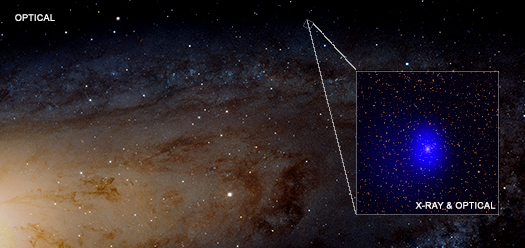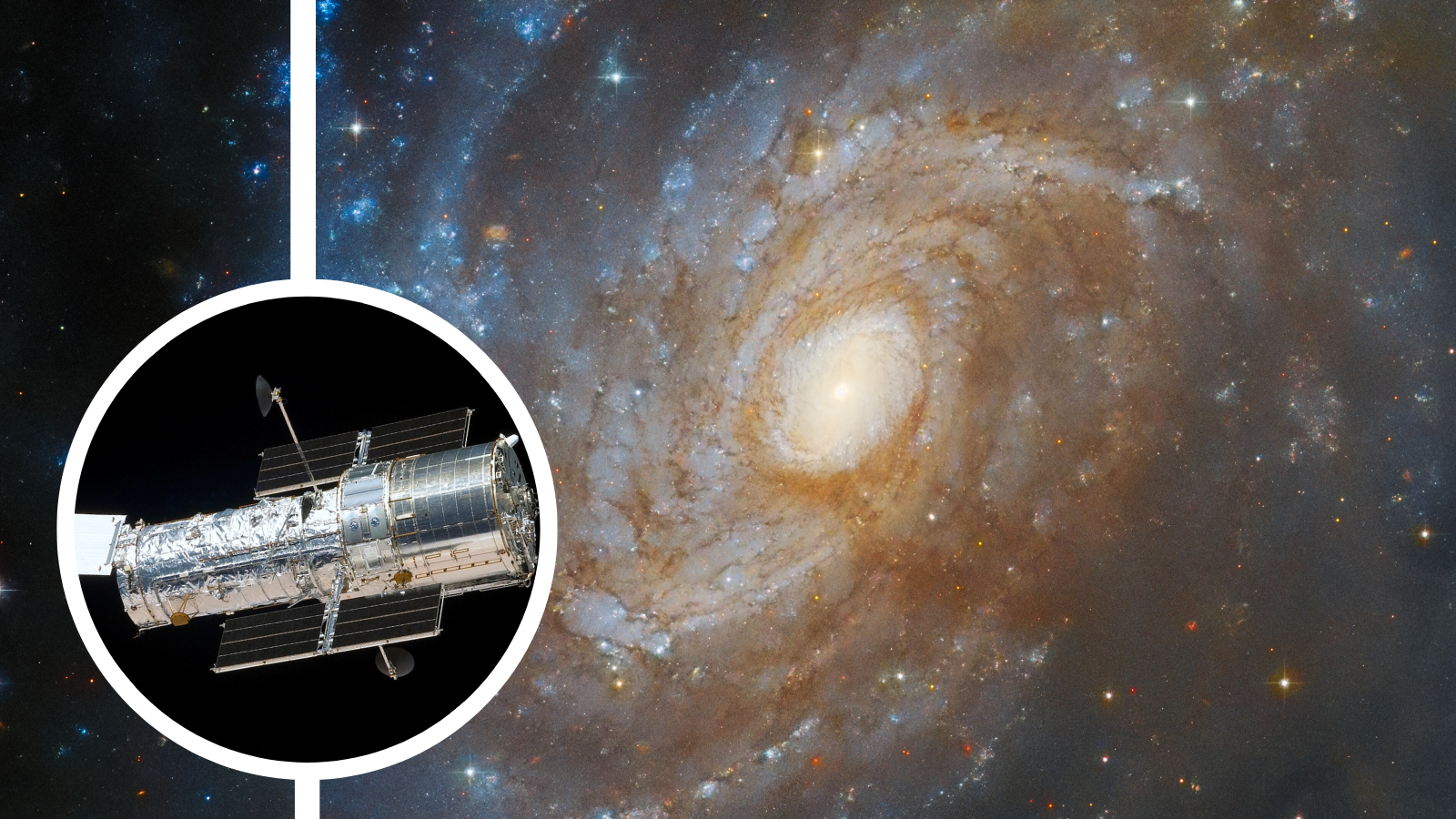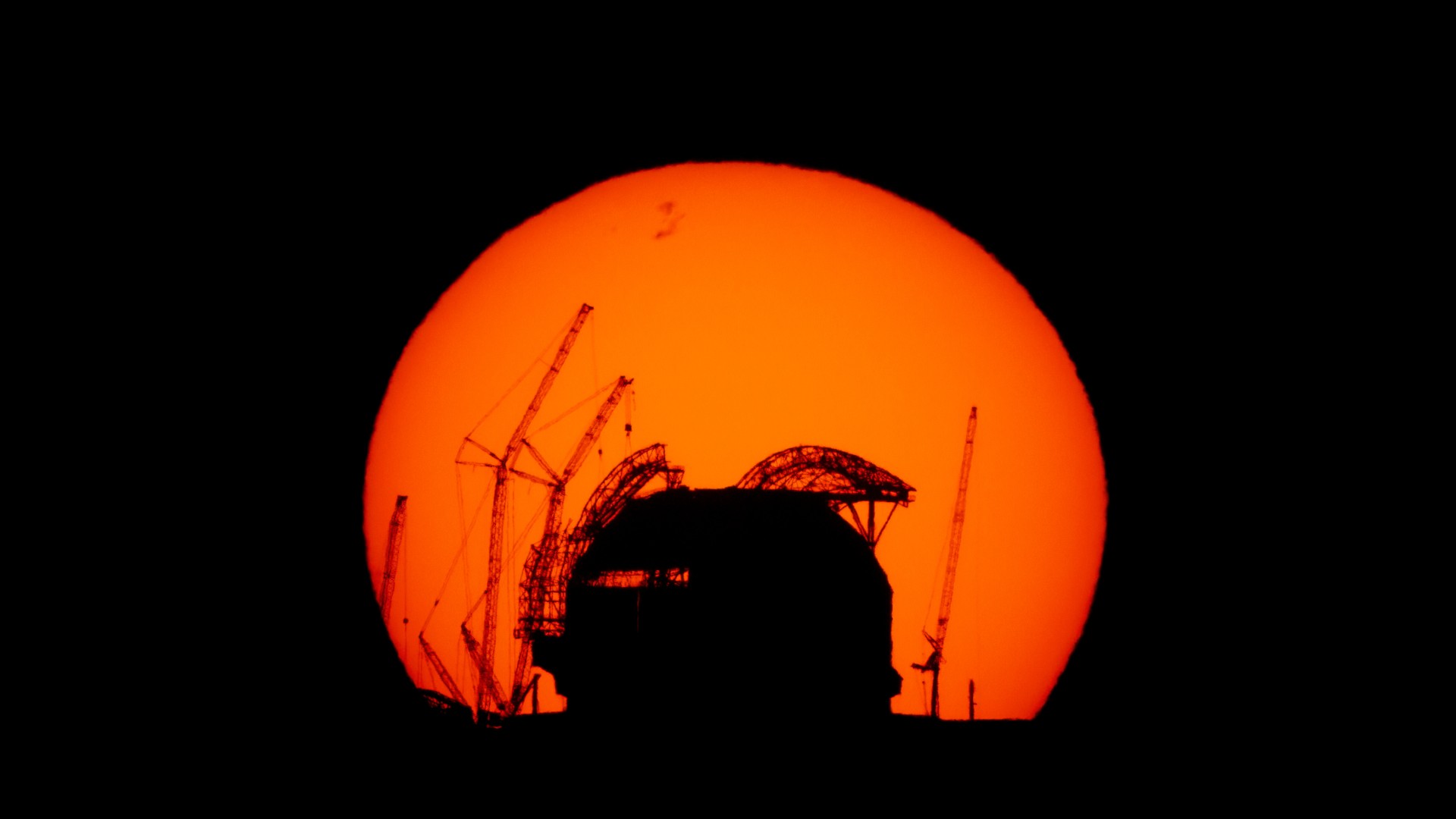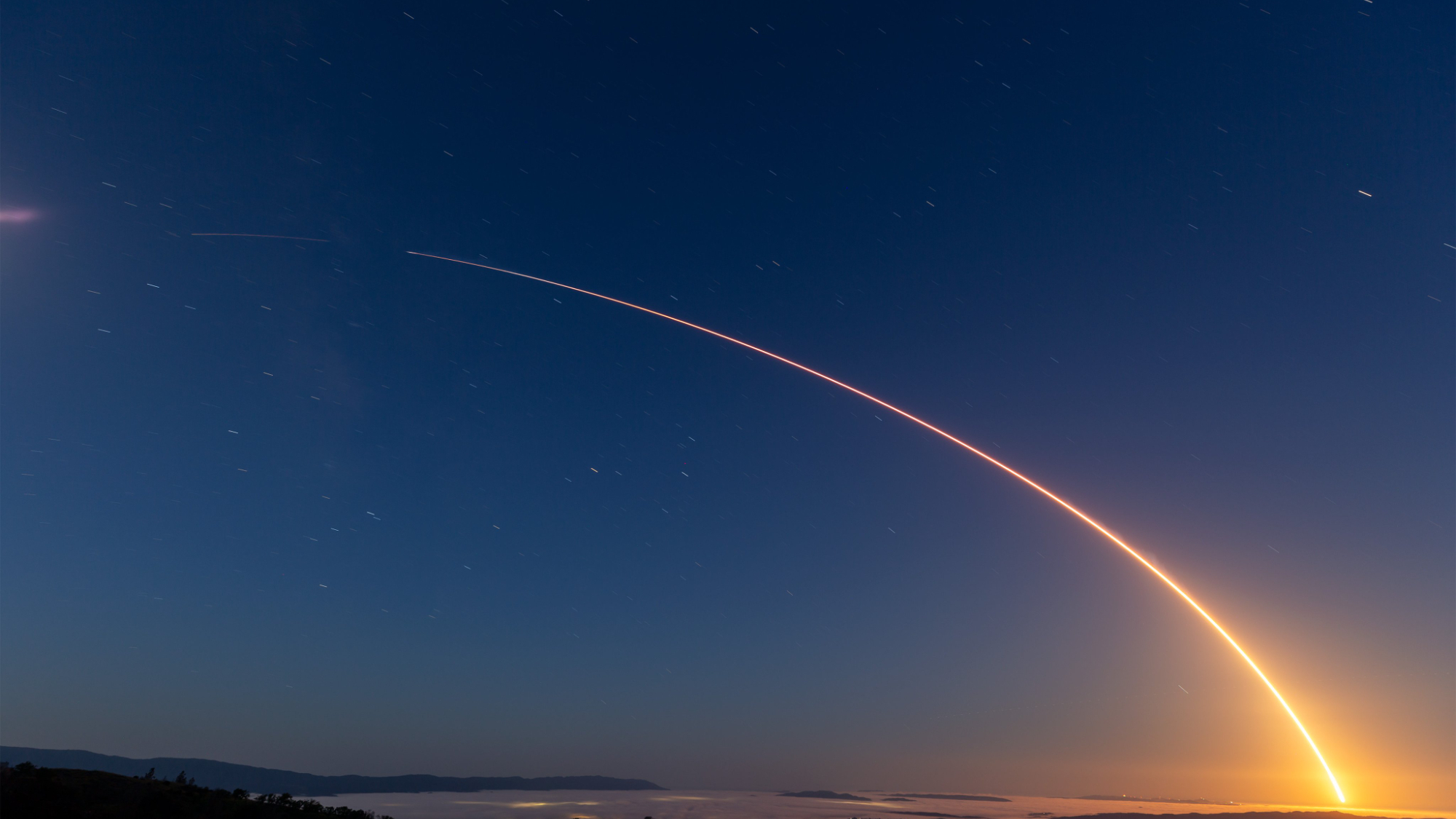Cosmic Photobomb! Monster Black Holes Turn Up in New View of Andromeda Galaxy
A stunning new view of the Andromeda galaxy reveals an unexpected pair of supermassive black holes that researchers say are in close orbit around each other.
When they caught the black holes on camera, NASA's Chandra X-ray Observatory and ground-based optical telescopes were photographing the nearby Andromeda galaxy, also known as Messier 31 (M31). This spiral galaxy is about 2.5 million light-years from Earth, making it our Milky Way's closest neighbor.
The new images revealed an unusual source of radiation known as J004527.30+413254.3 (or J0045+41), which researchers thought was located within Andromeda but is instead a whopping 2.6 billion light-years away and contains a pair of monster black holes that act "as a cosmic bomb," researchers said in a statement. [Andromeda Galaxy Photos: Amazing Pictures of M31]

The estimated total mass for the two giant black holes is about 2 hundred million times that of the sun, according to the statement. The black holes are believed to be in close orbit around each other and may even be "the most tightly coupled pair of supermassive black holes ever seen," the researchers said.
"We were looking for a special type of star in M31 and thought we had found one," lead author Trevor Dorn-Wallenstein, a researcher from the University of Washington in Seattle, said in the statement. "We were surprised and excited to find something far stranger!"
Previously, scientists thought J0045+41 was a different kind of object within M31. Earlier observations showed periodic variations in the optical light from J0045+41, which researchers initially classified as a pair of stars that orbited around each other approximately once every 80 days.
The new data, however, shows that the repeating variations in the light from J0045+41 are actually the result of a pair of orbiting supermassive black holes, located much farther from Earth than previously thought.
Get the Space.com Newsletter
Breaking space news, the latest updates on rocket launches, skywatching events and more!
In addition to the Chandra X-ray Observatory, the recent observations used data from the Gemini North telescope in Hawaii and the California Institute of Technology's Palomar Observatory. Astronomers used the ground-based telescopes' observations to estimate the location and velocities of the supermassive black holes.
The optical data from the Palomar Transient Factory also revealed several periodic variations in the light from J0045+41, including ones at about 80 and 320 days, according to the statement.
"This is the first time such strong evidence has been found for a pair of orbiting giant black holes," co-author Emily Levesque, a researcher from the University of Washington, said in the statement.

The black holes are believed to orbit each other with a separation of only a few hundred times the distance between the Earth and the sun. At this distance, which is less than one hundredth of a light-year, the two black holes are in orbits that bring them exceptionally close together, the researchers said.
This type of system likely formed following a galaxy merger that occurred billions of years ago. In this scenario, the two galaxies that merged would have each contained a supermassive black hole of its own, according to the study.
Currently, the two giant black holes emit gravitational waves as they draw closer together. Eventually, the black holes are expected to collide, the researchers said.
"We're unable to pinpoint exactly how much mass each of these black holes contains," co-author John Ruan, a researcher from the University of Washington, said in the statement. "Depending on that, we think this pair will collide and merge into one black hole in as little as 350 years or as much as 360,000 years."
Their findings were published Nov. 20 in The Astrophysical Journal.
Follow Samantha Mathewson @Sam_Ashley13. Follow us @Spacedotcom, Facebook and Google+. Original article on Space.com.
Join our Space Forums to keep talking space on the latest missions, night sky and more! And if you have a news tip, correction or comment, let us know at: community@space.com.

Samantha Mathewson joined Space.com as an intern in the summer of 2016. She received a B.A. in Journalism and Environmental Science at the University of New Haven, in Connecticut. Previously, her work has been published in Nature World News. When not writing or reading about science, Samantha enjoys traveling to new places and taking photos! You can follow her on Twitter @Sam_Ashley13.









